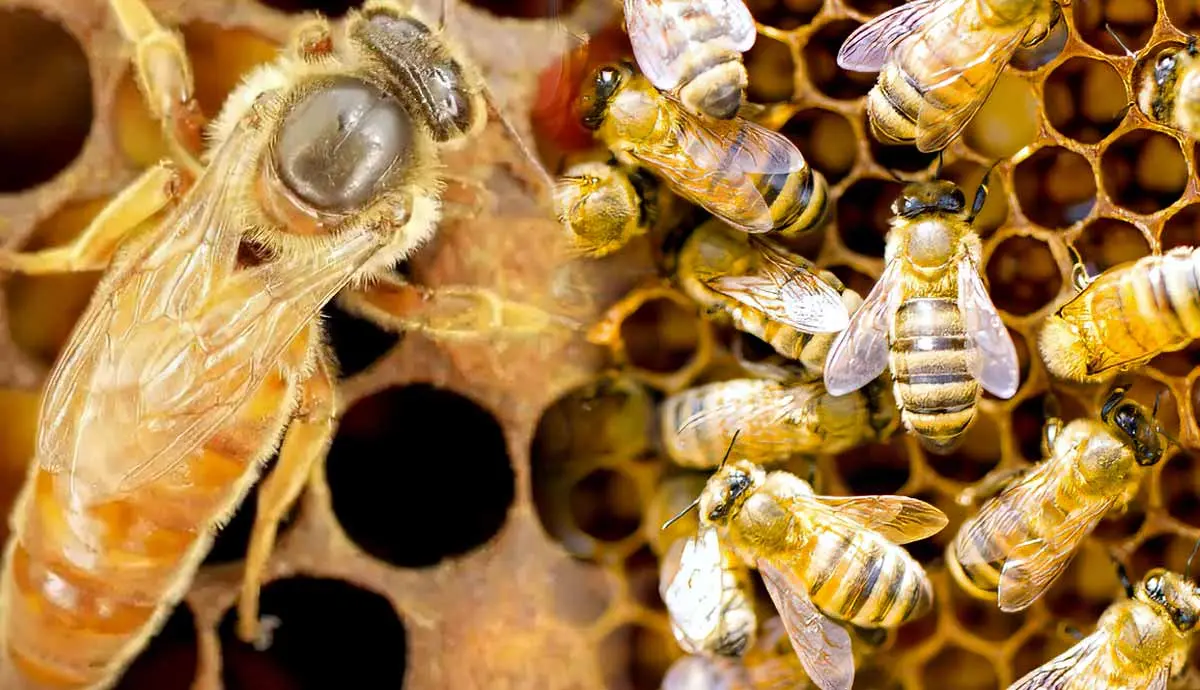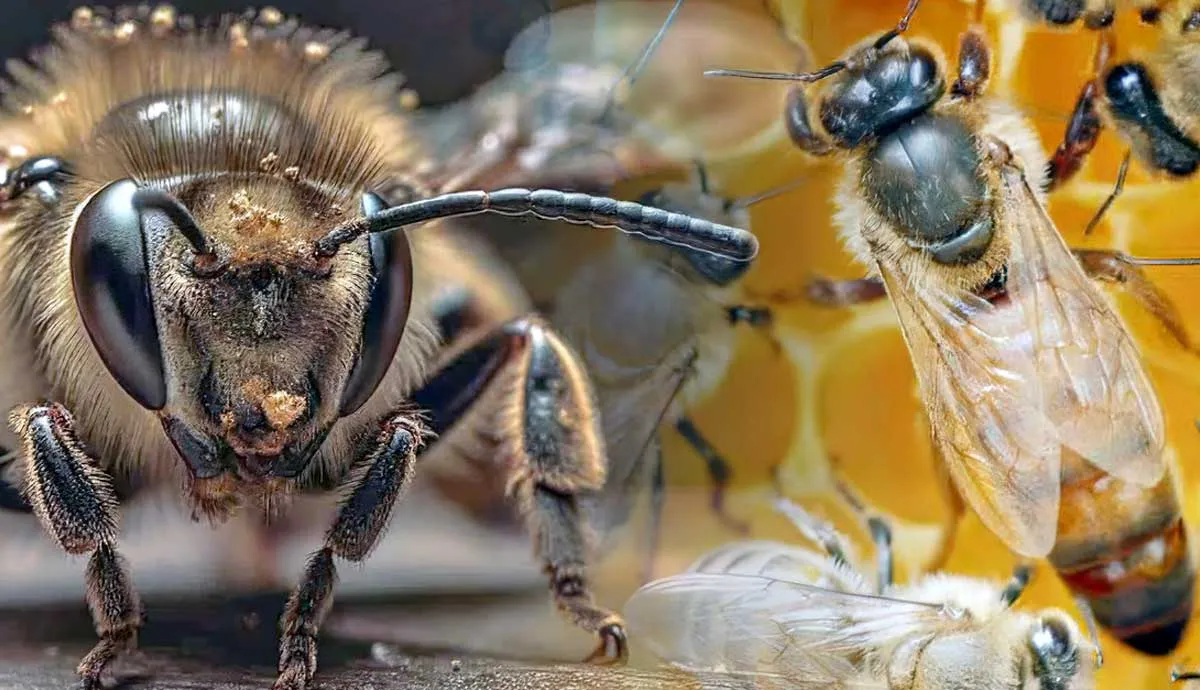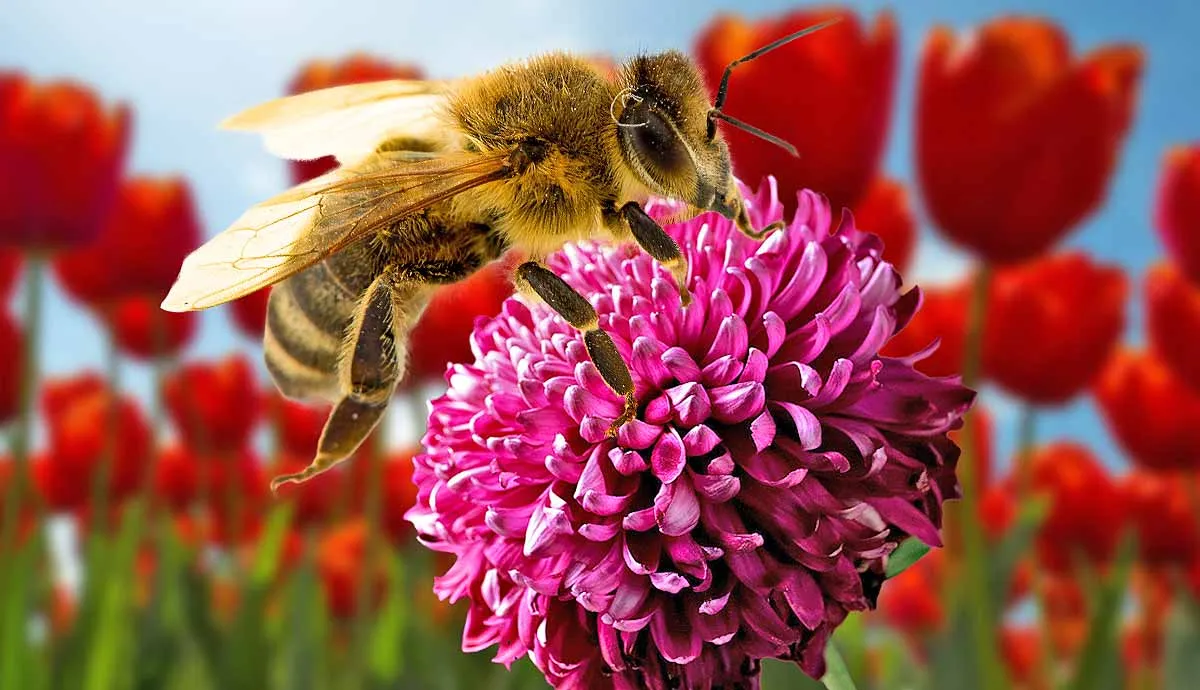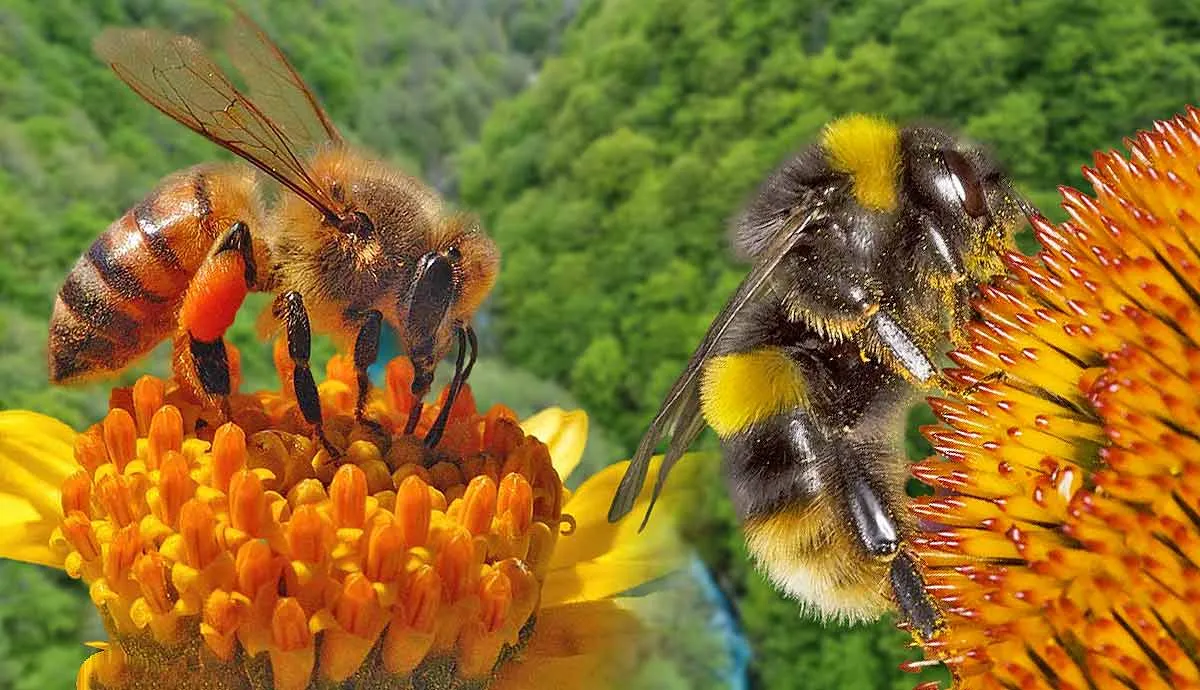To most people, a bee is a bee is a bee. Right? Not quite - aside from the obvious differences between honeybees, bumblebees, and the rest (yes, there are more), there are distinct roles in a honeybee hive as well. The queen bee and her worker bees might look alike to the naked eye, but they each possess unique qualities that make them pivotal to the functioning of the colony. Here’s what sets them apart from one another.
Physiology and Appearance
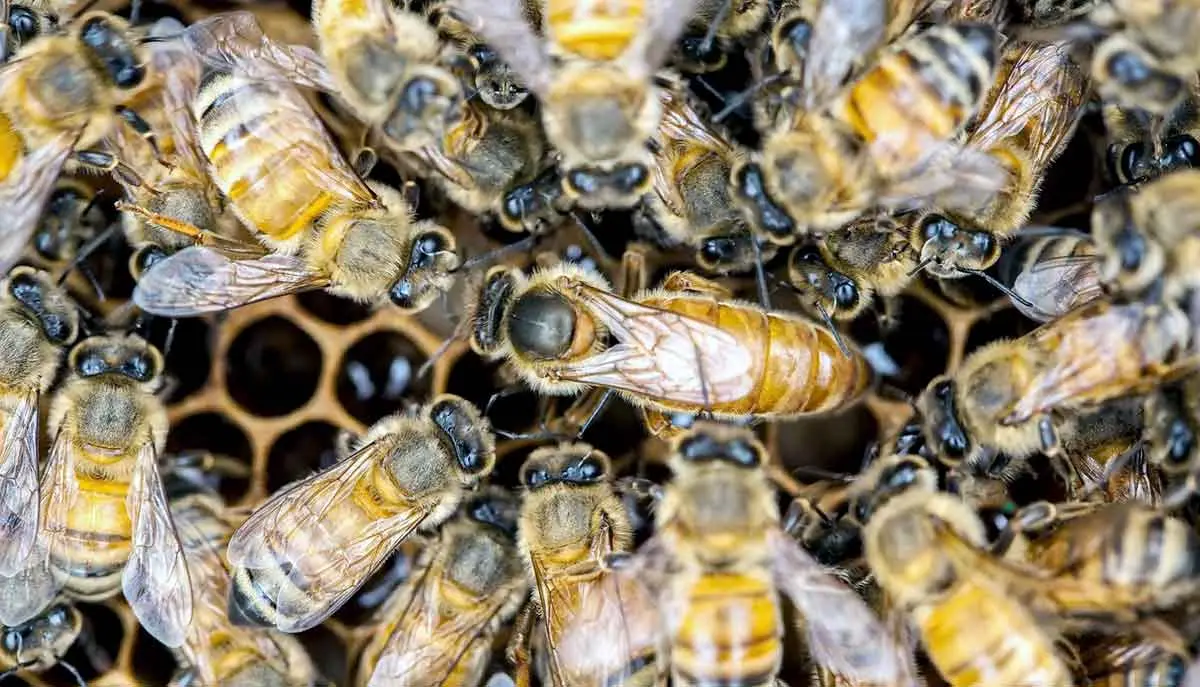
First, although they might be difficult to distinguish at first glance,the queen bee looks quite different from the workers if you know what to look out for.
The biggest difference to note is size - the queen is significantly larger than the rest of the hive, with a much longer body. Because of this extra length she possesses, she’s the only member of the hive whose wings don’t stretch beyond her body. This makes her wings look short, even though these are typically the same size and length as the other colony members.
She might also be of a slightly different color, have longer legs, and a more pronounced jaw that helps her out in her mating role.
Roles and Responsibilities

The most notable difference between the worker bees and their queen is the role they play in the functioning of the hive. All the workers share the various tasks of collecting pollen and nectar, cleaning and constructing the honeycomb, and even feeding the larvae as they develop.
On the other hand, the queen serves an entirely different function. She is solely responsible for the growth and reproduction of the hive. Queen Bee is the only female who can mate and lay eggs, and she does so at a rapid pace. When she’s younger, she leaves the hive to mate with various drone bees and then lays over 1000 eggs each day once she’s ready.
The queen also produces pheromones, chemicals that enable effective communication throughout the hive. Bees can use it to identify one another and understand their tasks. She uses this special chemical to help create unity in the hive and regulate the behavior of the colony - just like a true leader should!
Reproduction
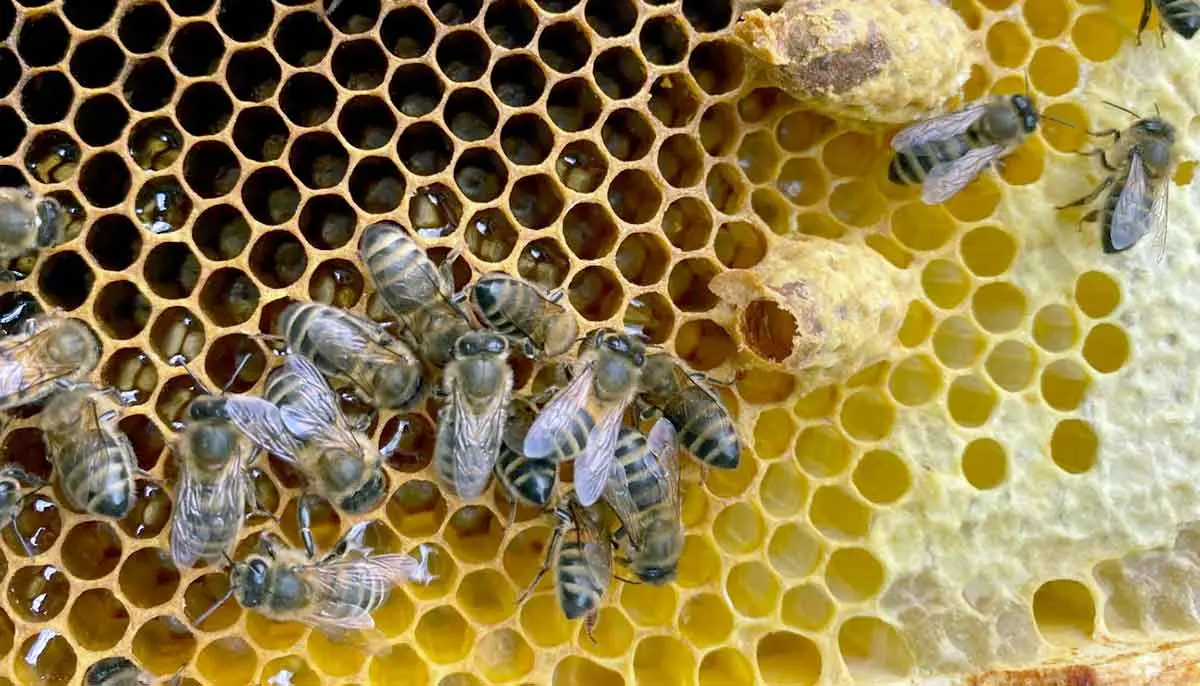
As mentioned, the queen is the sole female in charge of reproduction. But what does this mean for the rest of the colony?
As it turns out, worker bees (which are all female, mind you) are actually sterile and mostly incapable of reproduction in the first place! The only time a worker bee can and might lay eggs is when the colony is queenless for whatever reason. However, because the workers cannot mate, the eggs they do lay would all be unfertilized and develop into drone bees.
Sterile female workers still assist in the reproduction process, though, by tending to the queen and nurturing the young as they are developing - it really does take a village!
Symbiotic Relationship

As you can tell, all the bees in a colony have a significant and imperative role to play in the functioning of the hive. In this regard, the relationship between the queen and her workers is also what w call ‘symbiotic.’
This essentially means that the two types of bees are intrinsically linked, and one cannot function without the other. Their existences are mutually beneficial (and even essential) to the others’ survival. Even the less talked about drone bees are pivotal - without their sterilization, no new worker bees could develop to maintain the day-to-day operations of the hive and keep everything afloat.
However, it’s interesting to note that drones don't even survive the mating process, and those who aren't chosen as a mate will likely die without ever serving a purpose.
Environmental Impact
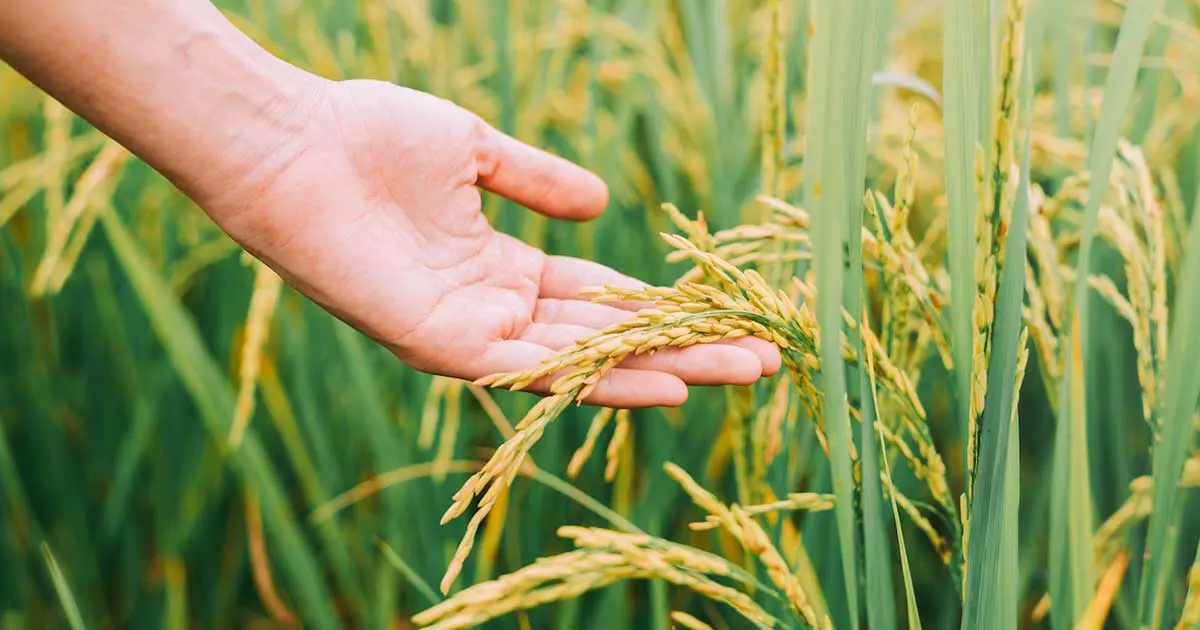
We’ve all heard people touting the phrase “save the bees,” but why are bees so vital to the environment in the first place?
For starters, bees (worker bees in particular) play a major role in food production across the globe thanks to their pollination habits. To keep it short and sweet, most of the plants we rely on for food (and other facets of food production) are only able to flower and reproduce thanks to the bees who keep them going.
Naturally, without the queen to manage the hive and maintain the bee population overall, this wouldn’t be possible, and the entire global ecosystem would suffer. Bees’ social strategies and the way they cooperate is one of the most astounding and important survival strategies seen in nature.
